Colin Bell
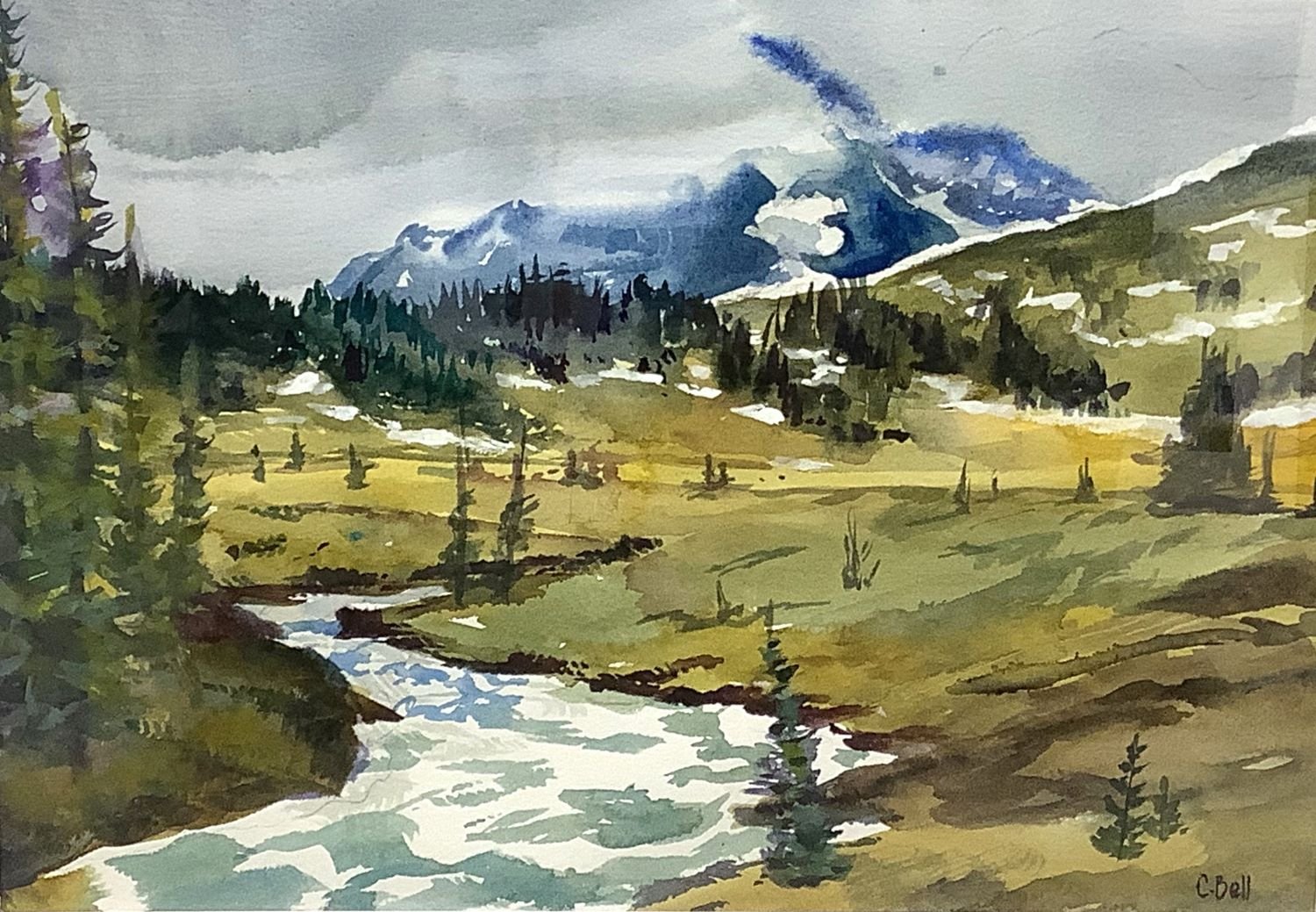
Healy Meadows #1 (#977), watercolour/paper, 10 x 14 inches (25.5 x 35.5 cm), framed, $400 Cdn.
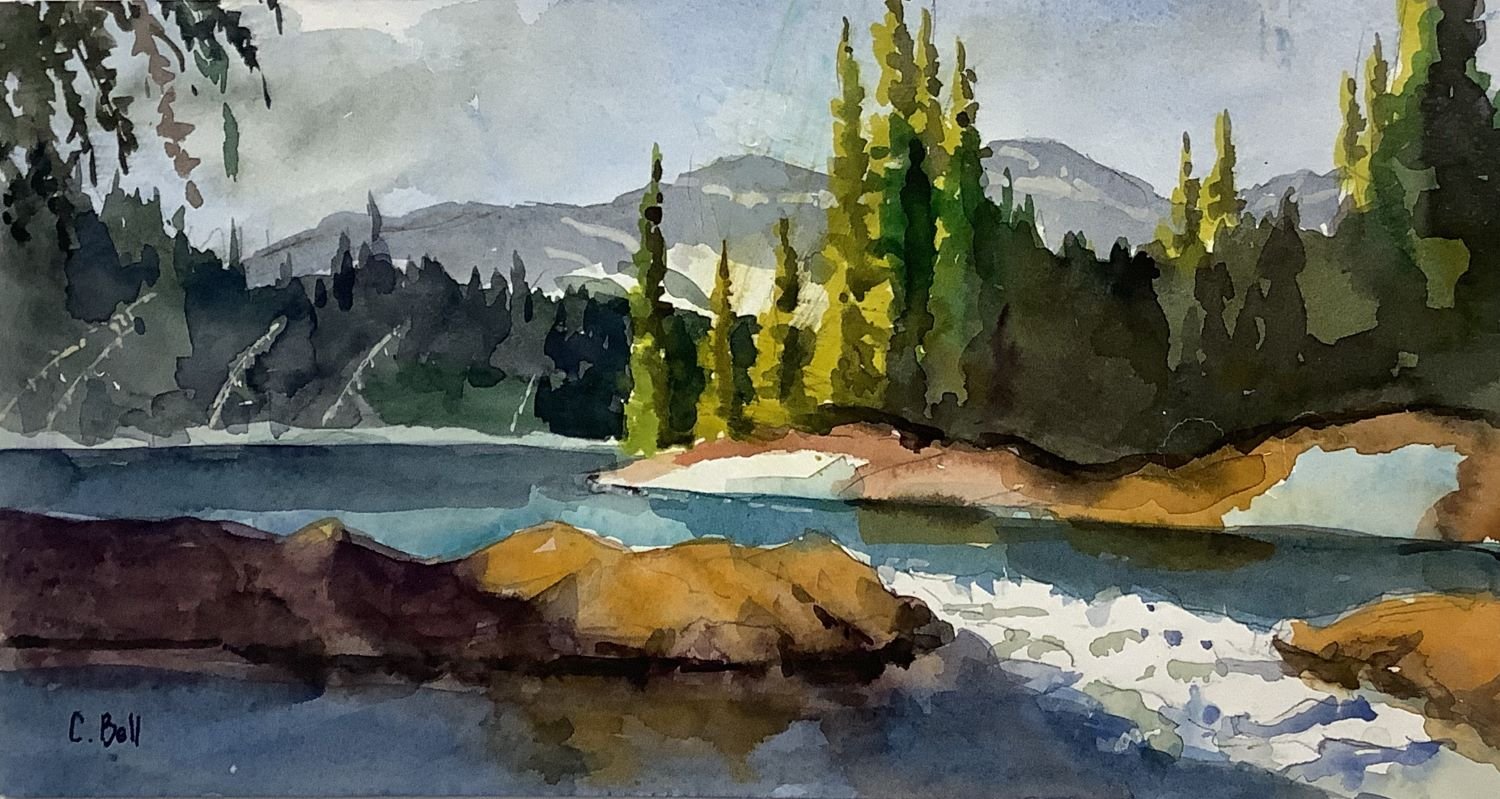
Widow Maker Rapids #2 (#1403), watercolour/paper, varnished, 8x15 inches (20.5 x 38 cm), unframed, sold.
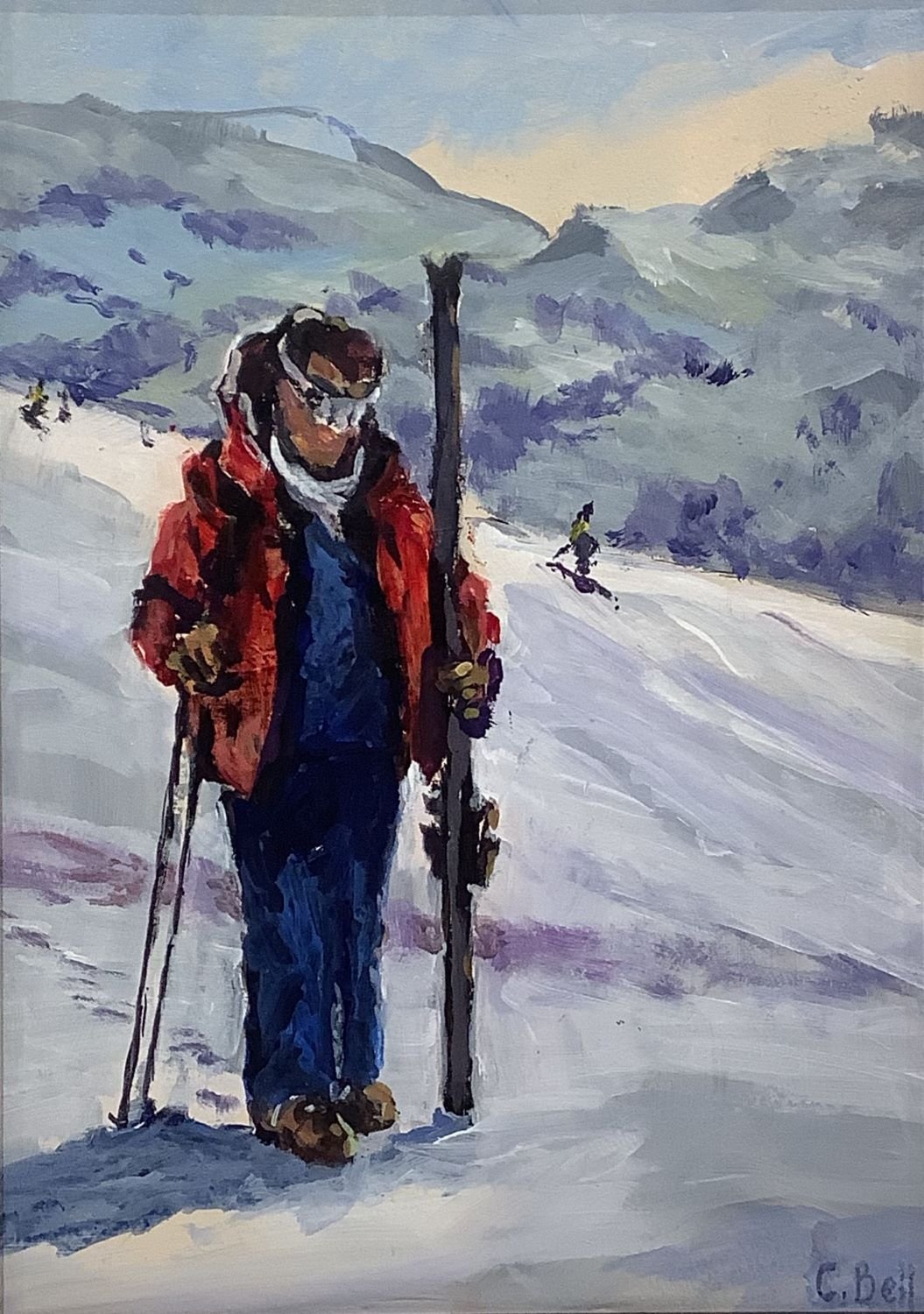
Final Run (#1402), acrylic on panel, 14x10 inches (35.5 x 25.5 cm), framed, sold.
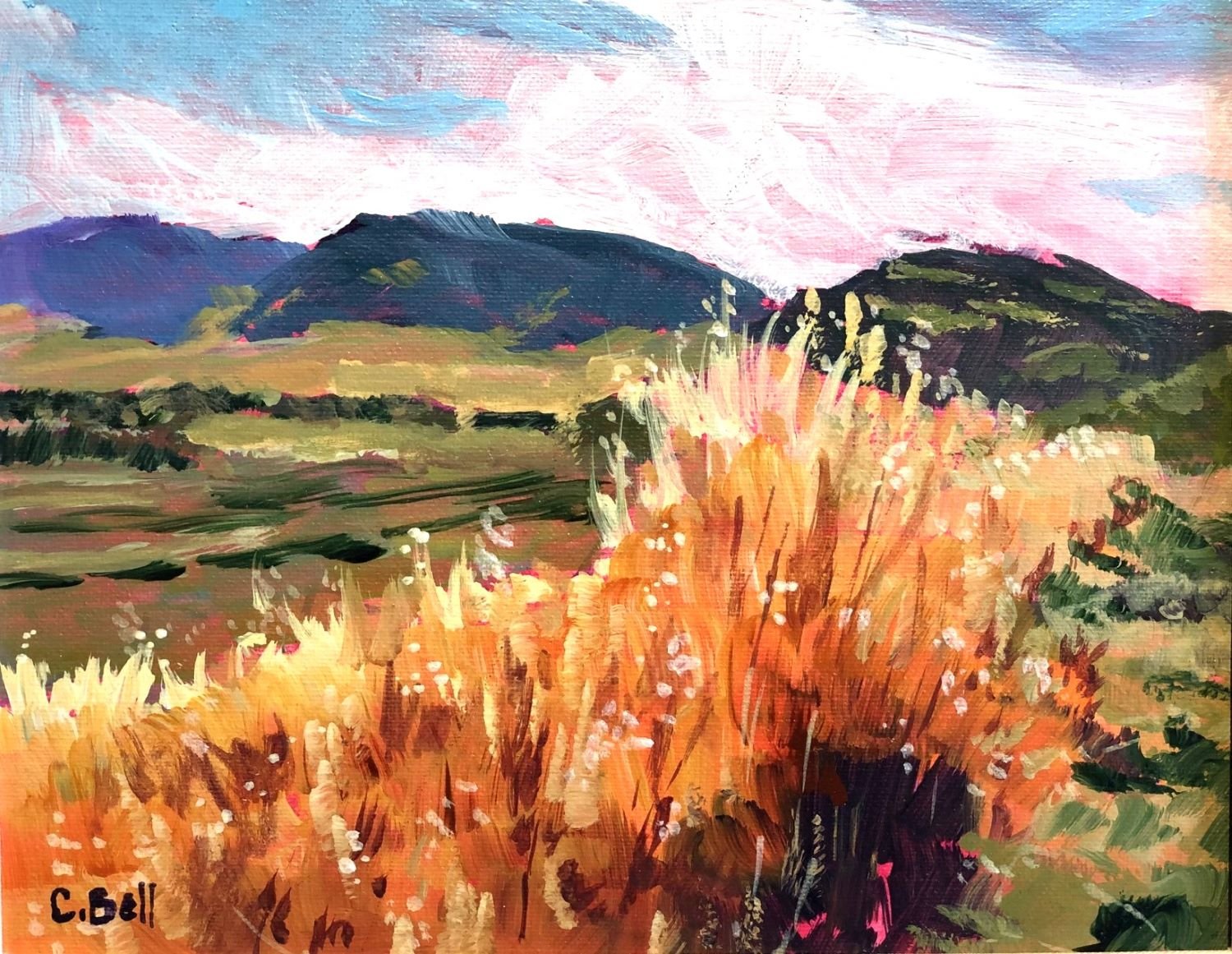
Dry Grass & Foothills, acrylic on panel, 8 x 10 inches (20 x 25.5 cm), sold.
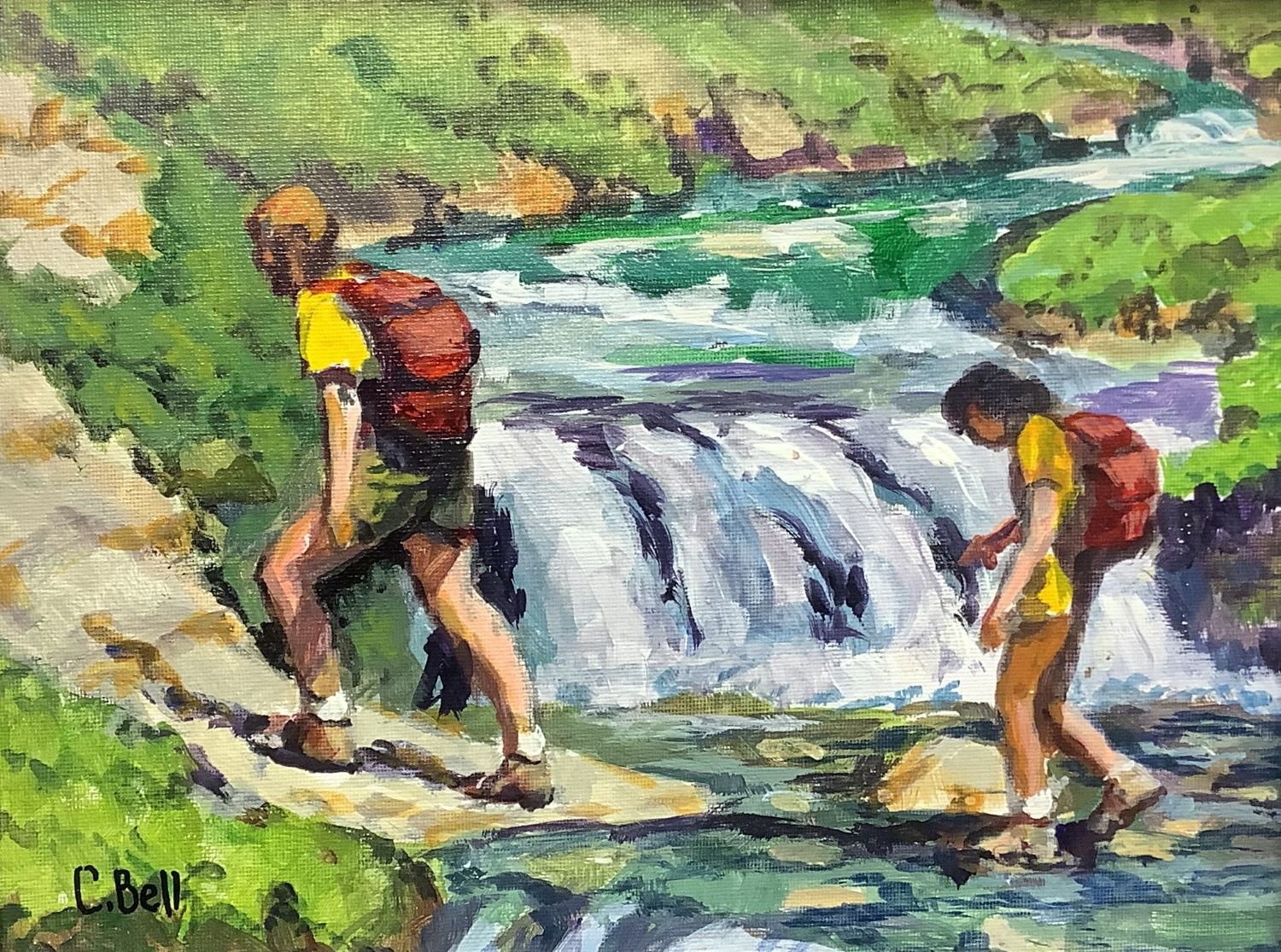
Crossing Helen Creek (#, acrylic/panel, 9x12 inches (23x30.5 cm), sold.

Mountain Torrent, watercolour/paper, 10x14 inches, sold.
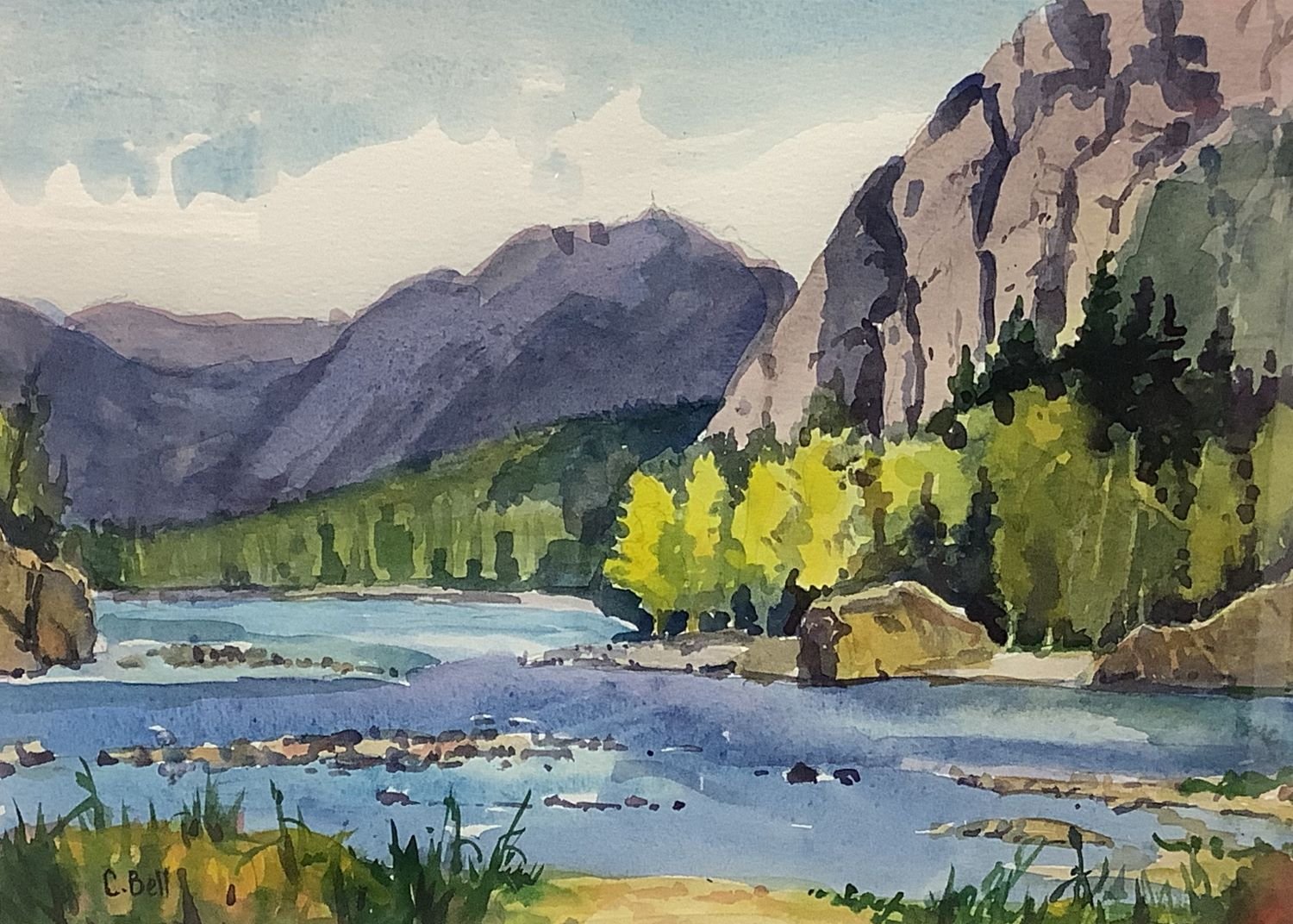
Bow River & Mt. Rundle (#1184), watercolour on paper, 10x14 inches (25.5 x 35.5 cm), sold.
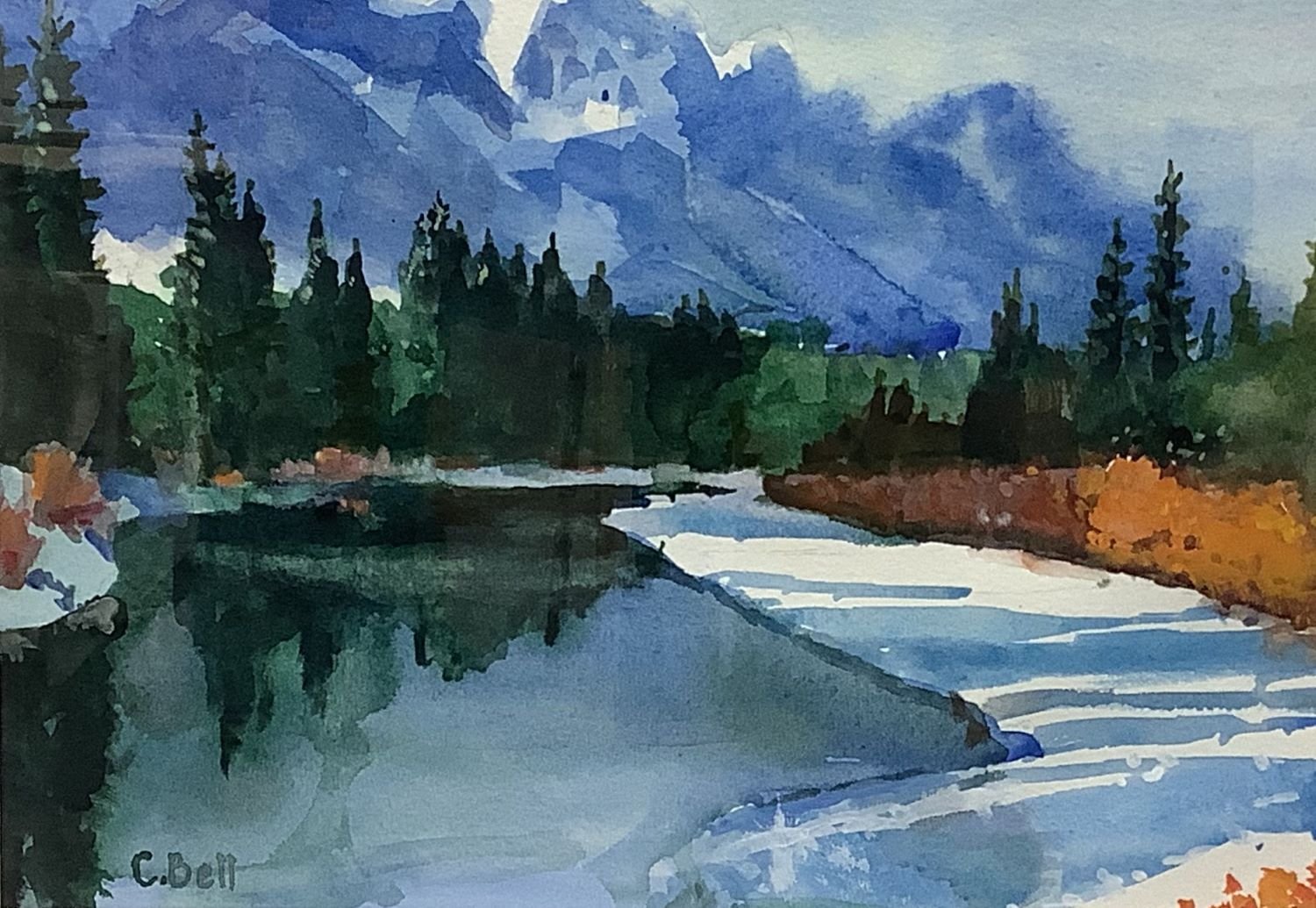
Policeman Creek Reflections (#1398), watercolour on paper, 10 x 14 inches (25.5 x 35.5 cm), sold.
a passion for art and the outdoors...
Colin was born in Argentina in 1936 to Anglo-Argentine parents. He attended English-speaking schools in Buenos Aires, where an English curriculum was taught as well as the mandatory Spanish elementary and high-school curriculum. Sports were a large part of school activities, including soccer, cricket, rugby, swimming and athletics. Colin’s family was seriously involved in the arts, including painting. When Colin showed serious interest in drawing at age 14, his godfather paid for him to have lessons in drawing and painting with a professional artist in Buenos Aires. Colin’s father was an avid sportsman, (he was on the Argentine skeet shooting team for the 1950 Pan-American Games). Thus Colin inherited a love of outdoor sports along with a passion for art and music (he studied piano until reaching university).
Colin studied architecture as a career in pure art would be too uncertain, income-wise, to raise a family. His studies were interrupted by 14 months of mandatory military service. In 1961 he married his girl Irene. After a very brief stay ln San Francisco, California, Colin & Irene returned to Argentina, where he started work as junior partner to an established architect. He then was employed with Techint, a large international engineering & contracting company, where he worked for 3 years as a designer and cost estimator.
By 1965 Colin and Irene now had 2 children, and prospects in architecture were bleak. Hearing that there was a need for architects in Canada, Colin communicated with the R.A.I.C., (Royal Architectural Institute of Canada) confirming that there was a lot of work for architects. He secured a work permit and started work in Toronto in May 1965. He rapidly decided Toronto was too large a city, and moved to Calgary. At the time Calgary had a population of around 300,000, was close to the mountains and had a trout river running through it. Ideal! He settled into his work there, also joining a tennis club and renting a piano for his leisure time. Immigration authorities finally granted his family their landed immigrant permits, and they arrived in Calgary on a snowy day in November 1965.
From 1965 until 1972 Colin worked as an employed designer at a succession of architects’ offices. Meanwhile he and his family became Canadian citizens and Colin became a registered architect in Alberta. In 1972 Colin started in private practice, first with a partner, and then on his own. Although he had enough work to put food on the table, income was uncertain, and vacations could never last over a week. When a position was advertised for a staff architect at the City of Calgary in late 1974 Colin got the job. The job involved the design, maintenance and restoration of city-owned buildings (arenas, indoor pools, firehalls, police stations, pump stations, etc.), with some involvement in pedestrian overpasses and sound barriers. There was a lot of in-house design and even more supervision of outside architects doing work for the City.
Once the children, Charlie and Marie, had reached high-school age, Colin returned seriously to painting. First he took an evening course at the University of Calgary, then a watercolour course with Susan Woolgar. He became a member of The Group in 1982, and of the Calgary Artists’ Society the following year. Over the years he took workshops with Rick Grandmaison, Stan Blodgett, Zoltan Szabo, Mike Svob and a large number of other recognized artists, learning as much from watching the instructors’ methods of setting up as from their demonstrations and words of wisdom. Colin sold his first painting in 1981. In 1984 he plucked up the nerve to approach a gallery, and had his first show in 1985. In 1994 Colin retired from the City. He joined Irene in her translating business when she was offered a major translation for a pipeline tender in Ecuador. They have now both retired and Colin divides his time between painting, hiking and travel. He periodically instructs workshops in plein-air sketching and painting.
His work is in private, corporate, and public collections in Canada, the United States, and Mexico.
